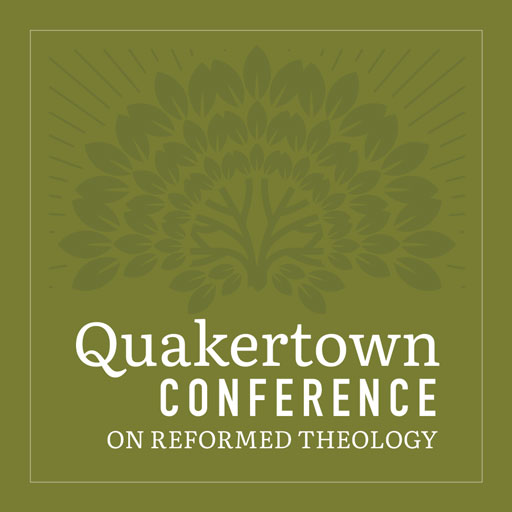
Nikolaus Von Amsdorf – More than a Beer-Drinking Friend
Nikolaus Von Amsdorf – More than a Beer-Drinking Friend
Nikolaus Von Amsdorf is usually remembered as one of the two friends (the other being Philip Melanchthon) who drank beer with Martin Luther while “God dealt the papacy a mighty blow.”[1] But there is much more to this man, his relationship to Luther, and his role in the Protestant Reformation.
Amsdorf’s Life
Amsdorf was born at Torgau, Saxony, on 3 December 1483, into a noble family, and studied at Leipzig and Wittenberg, where he later became a teacher. One of Luther’s earliest and closest friends, he overcame his initial discomfort with Luther’s teachings by embarking on a careful study of works by Augustine of Hippo.
Together with Melanchton, he later accompanied Luther to the Leipzig Debate (1519) and the Diet of Worms (1521), and helped to lead the Reformation in Wittenberg while Luther was in hiding at the Castle of Wartburg. His training as nobleman and his service as courtier of Frederick the Wise had refined his natural leadership skills, which came particularly useful at this critical time. They also shaped some of his decisions. For example, in 1523, unlike Luther and Melanchthon, Amsdorf had no qualms in encouraging inferior magistrates to armed resistance against the emperor in defense of the gospel.
He became a pastor in 1524, when the city of Magdeburg asked him to introduce the Reformation to their citizens. Initially hesitant to take on such a high calling, he finally agreed – partially because he was having some disagreements with Frederick. He proved to be a capable pastor and remained in that position for over seventeen years, in spite of constant threats from the local Roman Catholic clerics and other frequent challenges. During this time, he also wrote several works in German – mostly pastoral. While he was not an original thinker, these writings were instrumental to the development of the Lutheran Reformation in Germany.
His ministry, together with the work of Caspar Cruciger and Georg Major as rectors of the school, brought and secured the Reformation in Magdeburg. He was also influential in assisting the Reformation of nearby towns, such as Goslar, Einbeck, and Hannover.
In 1542, he reluctantly accepted Elector John Frederick of Saxony’s appointment as bishop of Naumburg-Zeitz, a diocese on which the elector had forced the Reformation by military pressure. This four-year bishopric was one of the most challenging periods of his life, as he had to battle not only with the Roman Catholic clerics and nobles, but also with the political aides appointed by the elector and with some independent pastors.
The start of the Schmalkaldic War (1546-1547) between the Roman Catholic emperor and his Protestant princes was a call to arms for Amsdorf, who joined the elector’s forces in Weimar. When the imperial forces triumphed, the Roman Catholic chapter of Naumburg-Zeitz deposed him from his position of bishop. He then returned to Magdeburg before finally retiring in Eisenach in 1552. He never married, and lived his last years with his widowed sister. In his retirement, he served as “general inspector and ecclesiastical counselor” for the elector’s sons, and organized the Jena edition of Luther’s Works (1555-1558). He died in 1565.
Defending Sola Gratia
Amsdorf expressed some sharp disagreements with Melanchthon over the role of good works in salvation, as he believed that Melanchthon was placing too much emphasis on human will and responsibility. In reality, the two Reformers were moved by different concerns. As a professor, Melanchthon was concerned with making his explanations clear to students and theologians who held different views, while Amsdorf, as pastor, was careful to convey the pure message of the gospel and protect his flock from Roman Catholic influences.
This divergence came to a head in the 1550’s, when Amsdorf objected to the inclusion, in the proposal of the Leipzig Interim, of the phrase “good works are necessary for salvation” (a phrase introduced by Georg Major). After all, in Magdeburg, he had been threatened to death by the Roman Catholic clerics for failing to teach that very sentence. He could not in any way accept this language from a fellow Lutheran, no matter what other meaning was attached to it.
To him, it was not a simple battle of words (depending on whether “salvation” was intended purely as justification or whether it included sanctification). As a pastor, he knew that precise wording could have disastrous implications in the life of its hearers.
He went as far as quoting Luther’s expressions that “good works are detrimental to salvation” when confidence is placed on them rather than on Christ. Although this specific phrase can’t be found in the existing works by Luther (Amsdorf might have heard it first-hand), Luther did condemn the false apostles who taught that “in addition to faith in Christ good works were necessary unto salvation.”[2]
Amsdorf gave a fuller explanation of his position in a pamphlet he prepared for publication (though it was never published), entitled “Good Works are Necessary for the Christian Life.”
Amsdorf’s position had an important role in the making of the Formula of Concord (1577), which rejected all extreme formulations in an effort to present what the formulators considered Luther’s true teachings.
Friendship Among Disagreements
Amsdorf’s disagreements with Melanchthon included other issues, such as contingency (the idea that God leaves certain things to human determination), the possibility of reconciling with the Roman Catholic Church (a venture Amsdorf considered hopeless and dangerous), the possibility of compromising on indifferent matters, and the nature of the Lord’s Supper.
One example of the different ways in which Amsdorf and Melanchton approached situations is Philip of Hesse’s adultery. While Melanchthon conceded to a bigamous relationship in an effort to avoid divorce, Amsdorf condemned it as a dangerous precedent. In a snarling remark, Amsdorf suggested that, if Philip needed a second wife, Philip’s wife, Christine of Saxony, could start looking for a young courtier.
Many of these doctrinal differences foreshadowed the larger controversy that took place after Luther’s death between the Philippists and the Gnesio-Lutherans. But the fact that the two Reformers could remain friends and respect each other in spite of these disagreements is a testimony to their focus on the gospel and their commitment to communicate it in the clearest possible terms.
[1] Roland Herbert Bainton, Here I Stand: A Life of Martin Luther, Peabody, MA, Hendrickson, 1950, p. 212
[2] Martin Luther, Commentary on Galatians, 1:6 https://www.gutenberg.org/files/1549/1549-h/1549-h.htm#link2HCH0001

























